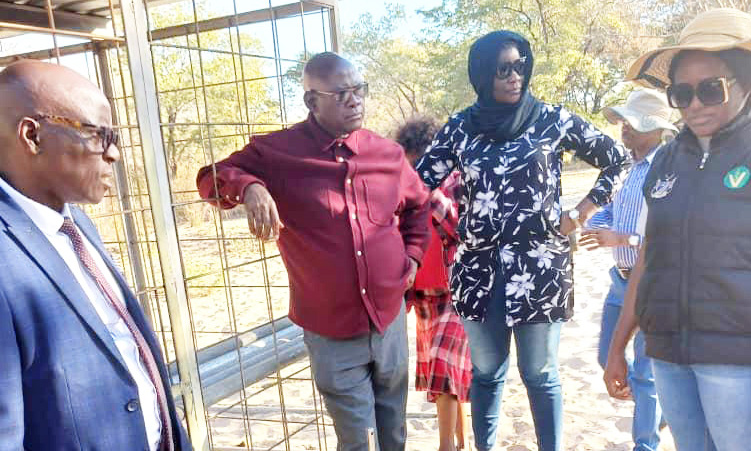Vandalism to Kopano quarantine farm in the Zambezi region, already in a dilapidated state, threatens livestock farmers’ continued access to markets.
Kopano quarantine farm, situated 42 kilometers west of Katima Mulilo, is the only operational facility in the region.
State veterinarian Beatrice Shikongo revealed this to the parliamentary standing committee on economics and public administration on Monday.
The committee was on a two-day oversight visit to the Zambezi region to address the urgent need for reviving the market for livestock in Namibia’s northern communal areas (NCA).
Shikongo said they can only rely on the Kopano quarantine farm because the Katima Mulilo quarantine facility is badly vandalised and has not been in use since 2014.
She said the Kopano quarantine farm covers approximately 18 000 hectares and is divided into 12 camps.
“The major challenge we have at the Kopano quarantine is the provision of water in some camps. We are only using nine camps because the rest of them do not have water. The quarantine fence is always being vandalised, as they cut through it and create illegal passages between Namibia and Zambia. This also poses a threat to our biosecurity, because if our animals go out through the cut fence, they will be in contact with other animals that are not quarantined,” she said.
She said through the farm, farmers can access markets, as, since it started operating in 2021, they have quarantined and slaughtered 3 492 cattle to date.
“Currently, we have 940 cattle in quarantine. Kopano quarantine serves the whole Zambezi region, including the Mukwe constituency,” she said.
Additionally, Shikongo said that through their routine foot and mouth disease prevention vaccination, which started on 27 February, they have vaccinated about 142 850 livestock so far and 90% of farmers’ livestock have ear tags.
Zambezi regional governor Lawrence Sampofu says the state in which the quarantine facility finds itself may scare off possible investors who may be concerned about the safety of the products coming from foot and mouth disease-prone areas.
“If they find that our quarantine facilities are not in good condition, we might be excluded from these markets. The 12 camps at Kapano, there is only one borehole supplying water. Water at some of these camps is not clean. Community members around the quarantine farm are cutting the fence. We really need the budget for the quarantines in the NCA to be up to standard,” he says.
Meatco livestock procurement manager Thimotius Kativa told the committee that last year they slaughtered 2 800 cattle in the region and paid out about N$19 million to 387 farmers.
He said despite these successes, they are hampered by numerous challenges, such as too few loading points for cattle in the region. They also have transport challenges, whereby they make use of expensive private trucks.
“The price that MeatCo is paying to farmers in the south is not the same as what is being paid here, as the products we are producing in the NCA do not have access to lucrative markets. However, as Meatco, we have submitted submissions for the government to introduce an equalisation fund where the price we are paying in the south should also be paid on this side, and the difference should come from the government. We say this because the government has these restrictions that the products from the NCA cannot move around freely, so the farmers cannot suffer,” he said.
Stay informed with The Namibian – your source for credible journalism. Get in-depth reporting and opinions for
only N$85 a month. Invest in journalism, invest in democracy –
Subscribe Now!






